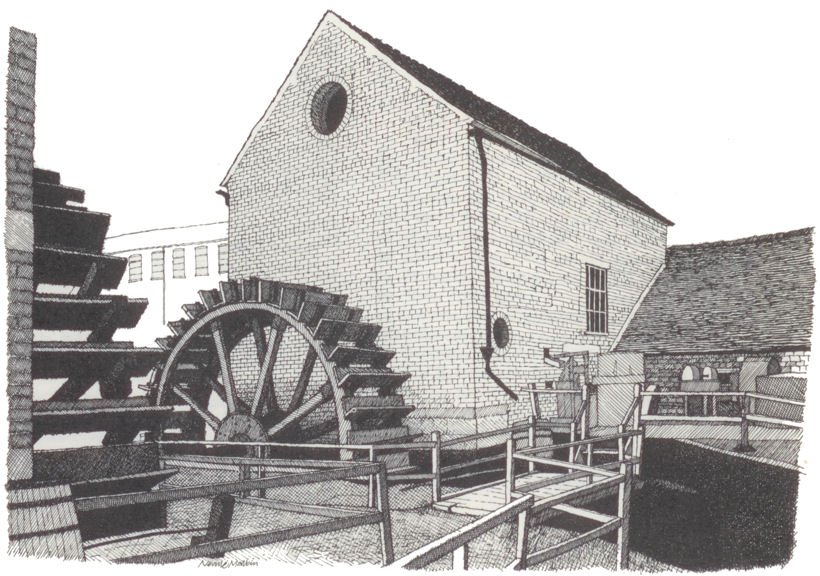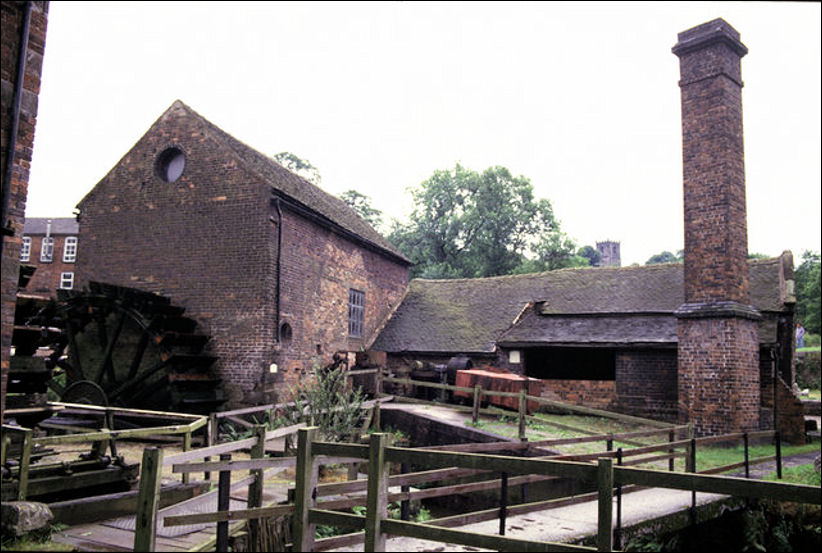|
|
|
![]() back to "The Grand Tour" index
back to "The Grand Tour" index
Neville Malkin's "Grand Tour" of the Potteries
buildings outlying Longton
![]()
![]()
previous: Alhambra Cinema, Normacotl
contents: index of buildings outlying Longton
|
No 110 - Cheddleton Flint Mill
© County Archaeology
Department - Staffordshire Past Track The earliest reference to milling at Cheddleton dates back to 1253. The northern mill (left) was built specifically to grind flint for the ceramic industry in the Potteries in about 1760. The southern mill began life as a corn mill and was adapted to grind flint at about the same time. There are two breast-shot water wheels powered by the River Churnet: the southern wheel is 20 feet 5 inches (6.2 metres) in diameter; the northern wheel is 22 feet (6.7 metres) in diameter. There are also calcining kilns and a drying kiln. The mill continued in use until 1963. Since 1967 the site has been restored and maintained as a museum by the Cheddleton Flint Mill Industrial Heritage Trust. |

Cheddleton Flint Mill
pen drawing by Neville Malkin
- February 1976

Cheddleton Flint Mills - 1987
© Copyright Chris Allen and licensed for reuse under this Creative Commons Licence.
|
"If you are at all interested in our industrial heritage and appreciate the skills and inventiveness of our ancestors, then a visit to Cheddleton Flint Mill will prove a most satisfying experience. It is situated in the picturesque Churnet Valley, with the fast-flowing river on one side and the still waters of the Cauldon Canal on the other. The origins of the Mill are still obscure but records show that there was a mill at Cheddleton as early as 1253; the will of a Josiah Ffiney, dated 1694, states that he
The mills apparently continued to specialise in grinding corn until the Cauldon Canal opened in 1777. This branch canal, from Etruria to Froghall, had been surveyed by James Brindley in 1772 and connected the limestone quarries at Cauldon Low with Wedgwood's factory at Etruria, and, consequently, fostered the industrial growth of the Potteries. The owners of the mills took advantage of this new mode of transport and converted the original cornmills into a suitable place for grinding flints for the more profitable industry. In the first half of the 19th century, the flint mills were part of a small industrial complex which included a silk mill and an ale and porter brewery belonging to Messrs. Joule. Both mills are built from brick and are similar in appearance, but recent evidence suggests that the South Mill is the older, and the original, much-enlarged and altered cornmill. The waterwheel on this mill actually works; it measures 20ft. 5in. in diameter and 5ft. 5in. in width, with 36 "L"-shaped larchwood floats attached to the cast iron rim, and provides power for many of the machines and exhibits inside the building. The waterwheel on the north mill is a little larger, measuring 22ft. by 5ft. 9+in. with 40 "L"-shaped floats; the building has been preserved as it would have been in 1815. Since the Mill was opened to the public in April 1969 a great many machines, tools, documents and other items relating to the preparation of raw materials for the pottery industry have been acquired and now form a unique assemblage of industrial archaeology.
The mills are open every Saturday and Sunday afternoon and admission is free, although donations are very necessary if the Trust is to fulfil its objective of creating a working museum of industrial heritage.' |
![]()
![]()
previous: Alhambra Cinema, Normacotl
contents: index of buildings outlying Longton
|
Related Pages external links.. Cheddleton Flint Mill Industrial Heritage Trust
|